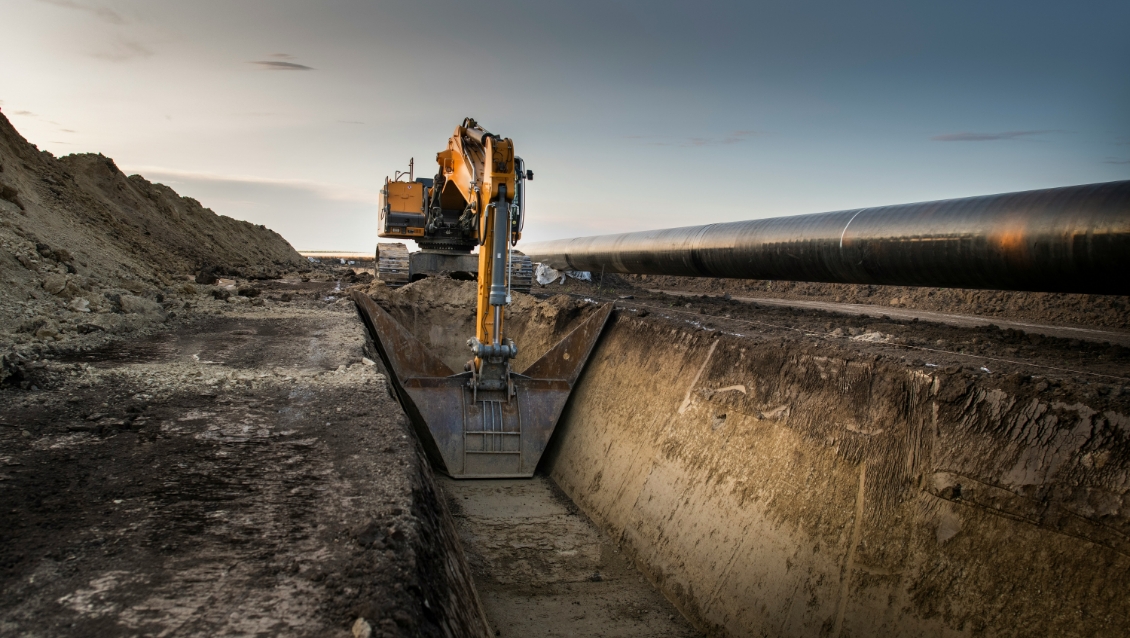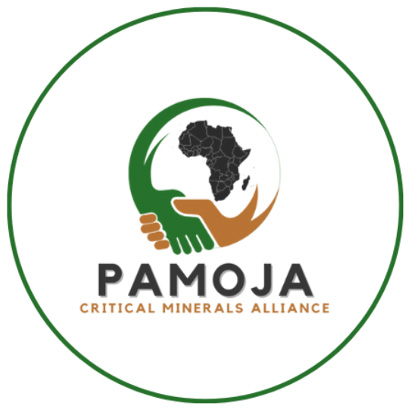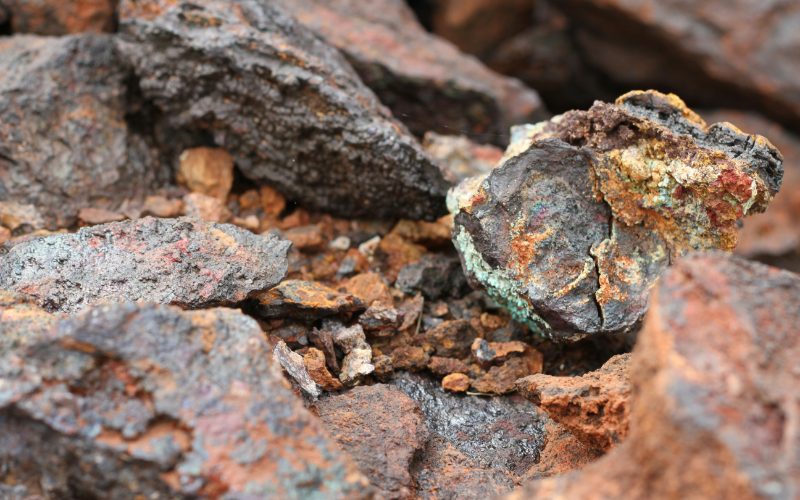Building Regional Cooperation with Pamoja Critical Minerals Alliance: A Q&A Blog Post with Dr Claude Kabemba of Southern African Resource Watch

Posted on 17 June 2025
The Pamoja Critical Minerals Alliance is a strategic initiative aimed at mobilising African communities and organisations to prevent a green resource curse from materialising around the continent’s critical minerals.
Executive Summary
- Established in 2023, the Pamoja Critical Minerals Alliance is a membership-driven initiative led by the Southern African Resource Watch aimed at addressing the implications of the increased extraction of critical minerals on local African communities and the environment.
- One of the major challenges which the PCMA seeks to address through its work is the lack of regional cooperation among mineral-rich African countries, which hinders their ability to extract greater value from their mineral resources.
- The PMCA works through a ‘spokes and hub’ model, which connects key stakeholders at the national and local levels to better coordinate advocacy and campaigning efforts.
- The PMCA seeks to amplify community voices, strengthen accountability and ensure that mineral-rich African countries move beyond extraction to ownership and transformation.
The Pamoja Critical Minerals Alliance is a membership-driven initiative led by the Southern African Resource Warch for various organisations and communities that are interested in tracking the implications of increased extraction of critical minerals and other value-addition activities impacting communities and nature. Through mobilisation and the promotion of African communities and organisations, the Alliance aims to prevent a green resource curse from materialising across the continent.
 Pamoja Critical Minerals Alliance (Special Initiative)
Pamoja Critical Minerals Alliance (Special Initiative)
The questions that follow reflect on the origins and purpose of the Alliance, and are intended to support a broader conversation about how civil society organisations can mobilise themselves to promote the responsible governance of Africa’s mineral resources. The questions were posed to Dr Claude Kabemba, Executive Director of the Southern African Resource Watch, the organisation responsible for establishing the Alliance. This initiative, alongside many other resources such as mineral profiles, news and strategies, can be found on the African Green Minerals Observatory website.
Can you tell us why the Southern African Resource Watch decided to establish the Pamoja Critical Minerals Alliance?
The Southern African Resource Watch (SARW) established the Pamoja Critical Minerals Alliance (PCMA) following a strategic meeting held from November 21–22, 2023, in Lusaka, Zambia. This meeting brought together civil society organisations from the Democratic Republic of Congo (DRC) and Zambia to discuss the implementation of a bilateral agreement between their governments to manufacture electric vehicle (EV) batteries. These batteries require cobalt, copper, and manganese – minerals that are abundant in both countries. Despite this resource wealth, local communities often suffer environmental harm, face unemployment, and are excluded from decision-making related to mining and the creation of special economic zones.
During the meeting, participants expressed deep frustration over the lack of equitable benefits from mining activities and agreed that civil society must play a stronger role in ensuring that such industrial collaborations genuinely benefit African people. As a result, PCMA was founded to support and monitor the implementation of the DRC-Zambia agreement. Its mission is to ensure the initiative promotes local beneficiation, creates decent jobs, protects communities, and aligns with sustainable development goals.
In short, Pamoja is described as a grassroots movement advocating for a fairer share of Africa’s green minerals. It seeks to amplify community voices, strengthen accountability, and ensure the resource-rich region moves beyond extraction to ownership and transformation. The alliance embodies a vision of justice, inclusion, and sustainable development in the green minerals sector, not just for DRC and Zambia, but for the broader African continent.
Can you tell us more about the Pamoja Alliance in terms of how it works and what it does? Specific examples of the impact the Alliance is making would be insightful to share.
The Pamoja Critical Minerals Alliance is a pan-African grassroots movement uniting communities affected by mining, labour unions, women’s organisations, youth, and faith-based groups to demand justice in the extraction and governance of critical minerals. Rooted in the Swahili word “Pamoja,” meaning “together,” the alliance seeks to foster solidarity among different stakeholders to demand transparency, environmental protection, and socio-economic justice across Africa’s mining regions.
The Alliance works through a ‘spokes and hub’ model that connects national and local mobilisation efforts. It targets key sectors such as mining-impacted communities, student organisations, women’s rights groups, faith leaders, and mining unions. These groups are engaged in coordinated advocacy and campaigning to demand value addition, fair contracts, protection of human rights, and the promotion of national interests in international mineral dealings.
Since its formation, Pamoja has expanded its outreach and advocacy campaigns in the DRC, Zambia, and Zimbabwe, where focal points are now in place. These structures support community mobilisation and policy engagement. The Alliance plans further expansion into Mozambique, South Africa, and Tanzania to broaden its continental impact.
Pamoja’s influence lies in its ability to unify fragmented voices into a coordinated campaign for reforming Africa’s mineral sector. It advocates for policies that prioritise local beneficiation and uphold environmental and social safeguards. In doing so, it builds a strong, grassroots counterforce to push governments and corporations toward inclusive, transparent, and equitable mineral governance – putting people and the planet at the centre of Africa’s green transition.
Many countries in the Southern African Development Community have expressed their desire to promote greater value addition domestically. What are some of the main challenges to realising these policy goals and how can greater regional cooperation help to address these challenges?

Despite strong interest among Southern African countries to promote local value addition in critical minerals, significant challenges remain. Countries like Zambia and South Africa have developed strategies, and the DRC has policies restricting raw mineral exports. Yet, implementation lags policy ambitions, with few tangible outcomes seen on the ground.
Key challenges include a lack of political will, limited transparency, and fears around losing national sovereignty in regional collaborations. Many countries’ mineral reserves are controlled by foreign companies, leaving governments without the leverage or resources to drive industrialisation. In addition, the manufacturing sector faces difficulties attracting investors due to weak infrastructure, insufficient technology, and inadequate skills. There is also a lack of coordinated comprehensive policy frameworks that link mining with broader economic transformation.
The DRC-Zambia agreement to manufacture electric vehicle (EV) batteries is a promising initiative, but it has yet to move beyond rhetoric. Special economic zones have been established in both countries, and international partnerships – including with the United States, European Union, and Afrexim Bank – have been formed. However, concrete progress is lacking.
Regional cooperation can help address these issues by pooling resources, harmonising regulations, and creating economies of scale through shared industrial infrastructure. It can reduce duplication, foster joint investments, and strengthen bargaining power with multinational corporations. The Pamoja Alliance continues to urge regional governments to move beyond declarations and work collectively to turn Africa’s mineral wealth into a driver of sustainable industrialisation and development.
Pamoja is a Swahili word for “together.” Why do you think it is more important than ever for all stakeholders to work together on the issue of critical minerals, and how do you think initiatives such as the Pamoja Alliance can help in this regard?
As global demand surges for critical minerals like cobalt, lithium, and rare earth elements – essential for clean energy and digital technologies – Africa finds itself at the centre of a new mineral scramble. With an estimated 40% of global reserves, the continent plays a pivotal role in the energy transition. However, unless managed differently this time around, past patterns of exploitation where African nations gain little from their resources could be repeated.
Collective action is essential to ensure that critical minerals benefit African people first. The Pamoja Alliance offers a strategic and united front to shift the paradigm from extraction for export to ownership, local value addition, and sustainable development. Pamoja supports countries in crafting national and regional strategies aligned with the African Union’s Agenda 2063, the African Mining Vision, the African Green Mineral Strategy, and the Africa Continental Free Trade Area (AfCFTA).
Through advocacy and mobilisation, Pamoja promotes fair contracts, community rights, and transparent governance. It calls for robust, equitable contract negotiations that serve local development goals. It also champions environmental protection, Indigenous rights, gender equality, and responsible mining practices that minimise harm to people and ecosystems.
By fostering collaboration among civil society, governments, and regional institutions, Pamoja builds momentum for a new governance model that puts Africa’s long-term interests at the forefront. It encourages a continental narrative rooted in transformation, making Africa not just a source of raw materials but a leader in sustainable green technology and industrialisation.
For those organisations or individuals who are considering joining the Pamoja Alliance, can you give them one key reason why they should participate and contribute to the initiative?
One key reason to join the Pamoja Alliance is to be part of a transformative movement ensuring that Africa’s critical minerals fuel Africa’s own development, not just the industrialisation of others. As the global demand for critical minerals surges – projected to quadruple by 2050 according to the International Energy Agency – Africa stands at a defining moment. Rich in resources such as cobalt, lithium, copper, and rare earth elements, the continent holds a central role in the global energy transition. However, without coordinated action, Africa risks repeating a long history of exploitation, remaining a raw material exporter while others reap the benefits of clean energy technologies.
Joining Pamoja means actively supporting a just and equitable energy transition. This includes demanding transparency, environmental justice, labour rights, and community ownership. Pamoja rejects the outdated centre-periphery model and pushes for local beneficiation and value addition. The alliance champions domestic production of batteries, solar panels, and electric vehicles, aligning with key continental strategies like Agenda 2063 and the SADC Regional Mining Vision.
In addition, Pamoja calls for robust domestic resource mobilisation. Weak tax systems, illicit financial flows, and opaque contracts drain billions in lost revenues. By joining, you contribute to efforts to reform mining governance by promoting stronger tax laws, preventing profit shifting, increasing transparency, and ensuring regional cooperation to stop harmful investment competition. Ultimately, joining Pamoja means shaping Africa’s future as a hub for innovation, job creation, and sustainable industrialisation. It’s about turning the energy transition into a catalyst for structural change, placing Africa not at the margins but at the centre of global economic and environmental progress.